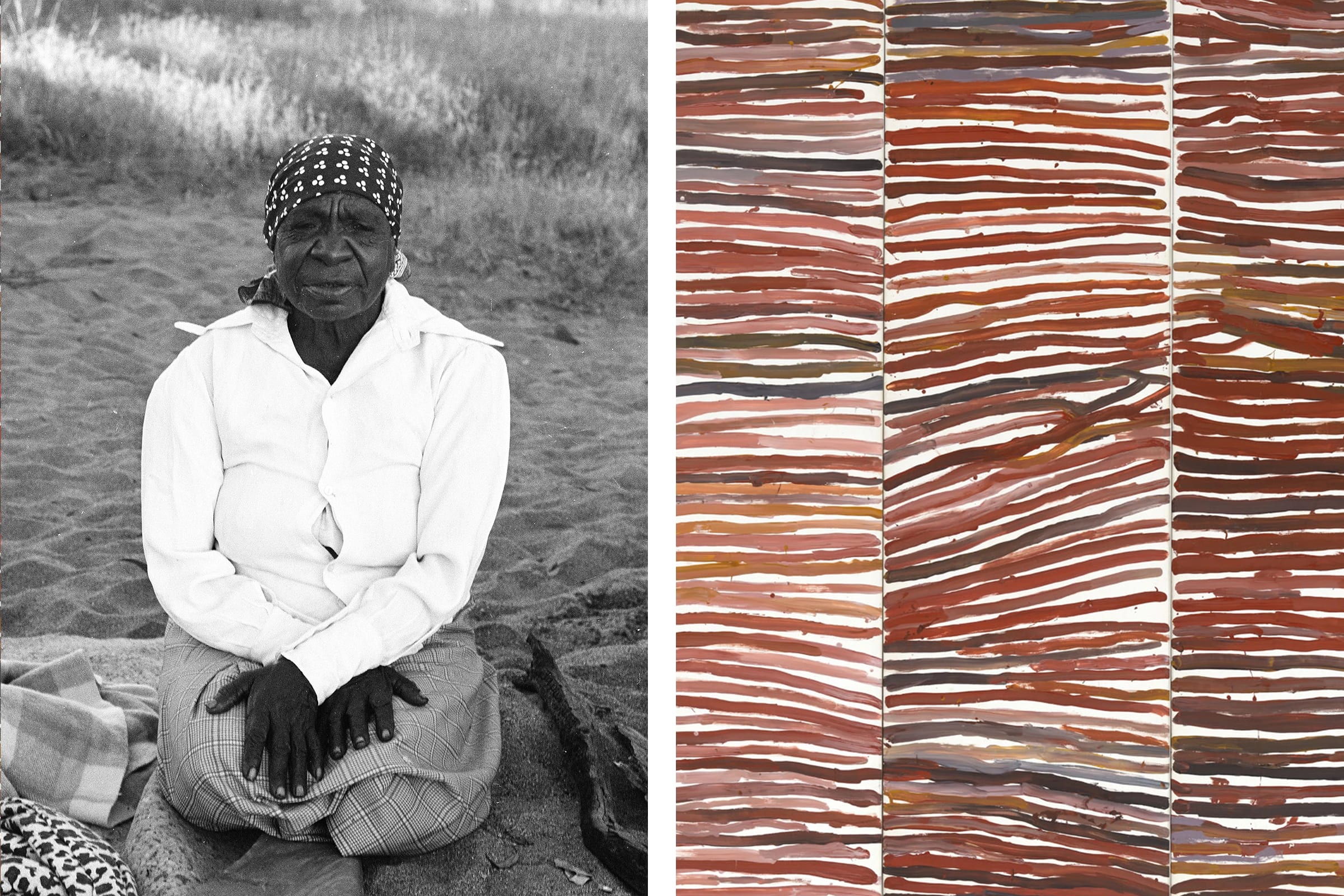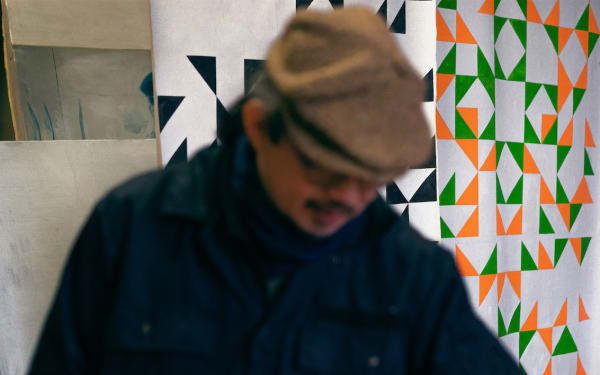Pietro Spartà藝廊是一個有趣的異類。藝廊的空間位於距離巴黎2小時車程的勃艮第郊野,周圍是葡萄園,被運河一分為二。此外,藝廊空間「極具象徵性地」脫離了藝術版圖,因為他們沒有任何的線上展示形式。同名創始人Spartà並不需要任何的修飾來吸引藝術家和收藏家。 Pietro Spartà是一個任性的實驗家,他了解自己所選擇的價值觀,是基於直覺、激情和社群的。

The senior Anmatyerr woman from Utopia – a homeland community of remote outstations on the north-west edge of the Simpson Desert and one of Australia’s poorest and most disadvantaged communities – is often known simply as ‘Emily’, the assumed name she used in the last 8 years of her life, when prevailed upon to sign her work. In her batiks on textiles and later acrylic paintings on canvas, Kngwarray described a cultural knowledge system which she inherited in epic stories (her dreamings) and performed in awely. Another story is encoded in the dots, the lines, and the gestures in every Kngwarray painting – the superhuman odyssey that unfolds over a thousand generations in the geographical heart of the harshest and driest inhabited continent on earth. I see her as a cultural ambassador sending encoded communiques in acrylic paint on canvas, deceptively titled ‘Untitled’. In doing so, she opened a portal to a high-key, complex universe so remote from the daily experience of the viewing public that it might as well have been another dimension. The same might be said today of the yawning gap between Utopia, the galleries that trade in Kngwarray’s work on the secondary market, the salerooms of the world’s leading auction houses, and the private homes of buyers with the surplus disposable income to buy an ‘Emily’.
The question that was asked, quite rightly, was how did this elderly Aboriginal woman, with limited exposure to the West let alone Modern and contemporary art, produce such luminous, strangely exhilarating paintings deploying the wild gestural arcs of an Abstract Expressionist or the sterile lines and cold formalism beloved of the Minimalists (as in the ‘stripe’ paintings which first surfaced around 1993 and of which Untitled (Awely) is acknowledged as one of the best examples)? There is nothing abstract or ‘Modernist’ in the roughly horizontal, blue-black, and grey parallel lines that appear to levitate on a field of apparently blank space across four panels, primed off-white. In the last 2 years of her life, Kngwarray produced some of the most evocative and spare awely paintings. The transference of these designs from ochre on the human body to paint on canvas echoes that seen at Papunya in the Western Desert in 1972, when a small group of tjilpi (grandfathers or senior men) tentatively took up brushes to paint their visions in the sand onto Masonite boards and later canvas.
Now, more than a quarter of a century after Hetti Perkins and co-curator Brenda Croft installed the masterpiece for the 1997 Venice Biennale, alongside Yvonne Koolmatrie’s woven, tubular eel traps and Judy Watson’s unstretched canvases of blood tides, Untitled (awely) returns to the center. The multi-panel work is a focal point in Perkins and Cole’s superb exhibition design on the ground floor of the National Gallery of Australia in Canberra. In a dramatic flourish, Untitled (awely) becomes a moment of reckoning with the artist’s unparalleled legacy, and her mortality, at the end of what is essentially a chronology of Kngwarray’s work, loaned from public and private collections around the world.
Any extraneous muscle or fat in the form of visual detail, color or texture has, by necessity, been cleaved away until only the bare bones – the essential, life-giving cultural knowledge – remains. The tension between those blue, black, and grey lines, and the white void of the base paint layer – which incidentally is the same hue as white ochre – tweaks my optic nerve as if jostling for attention, emitting a pulsing rhythm that seems to captivate the eye. I can only describe the effect Untitled (awely) had on me as evoking something like reverence; for Kngwarray’s life, the energy source that is her country, and the power of her artistic vision – although they are one and the same.
I can’t help but see in Untitled (awely) Kngwarray’s last testament to the forces that shaped her.
Emily Kam Kngwarray’s retrospective at the National Gallery of Australia runs until April 28th, 2024, and will travel to the Tate Modern in 2025.
Daniel Browning is an experienced First Nations writer, journalist, radio broadcaster, and sound artist. He presents The Art Show on ABC RN and is the Editor of Indigenous Radio with the Australian Broadcasting Corporation, where he began his media career in 1994. His first play has been shortlisted for the 2024 Victorian Premier’s Literary Awards and is published by the Indigenous-owned Magabala Books.
Published on January 10, 2024.

